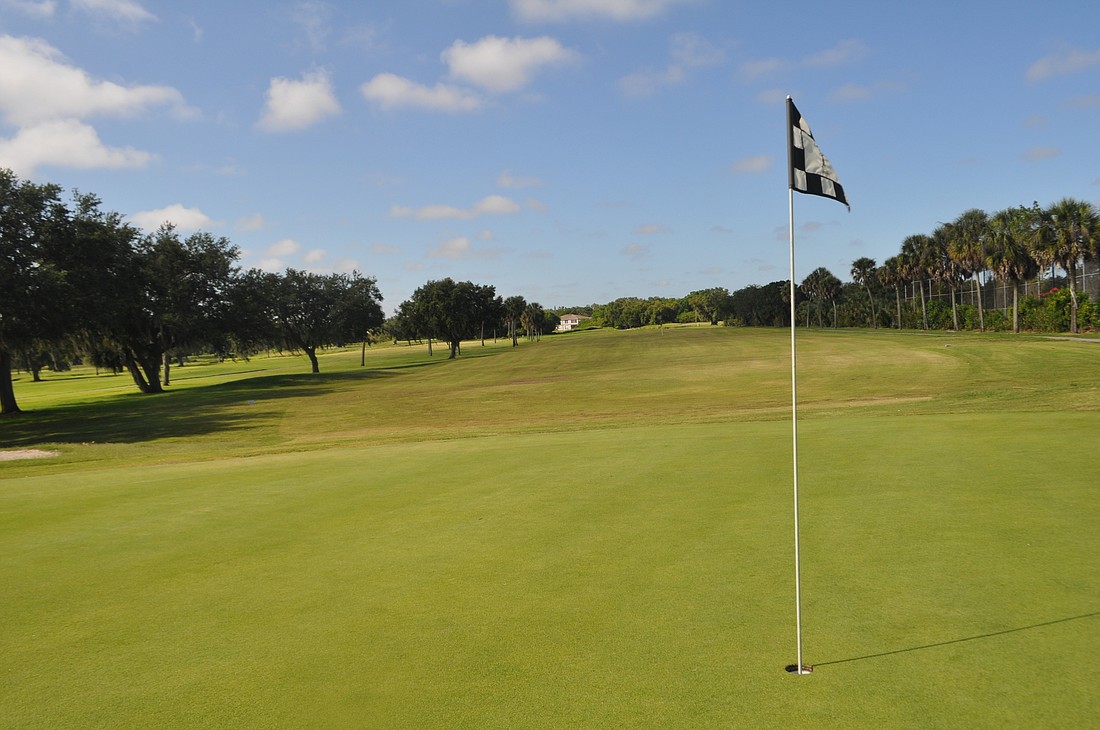- July 4, 2025
-
-
Loading

Loading

The city of Sarasota is preparing to search for a master planner to help guide the future of Bobby Jones Golf Club after a citizen committee suggested the course needs as much as $14.5 million in improvements.
In the meantime, city staff is responsible for managing and operating a public golf complex that needs as much as $14.5 million in improvements.
These two notions — that Bobby Jones is in dire need of substantial upgrades and that the city must also keep it open on a day-to-day basis — are a source of tension. This was highlighted at the June 6 City Commission meeting, when staff asked to free up money reserved for the replacement of the facility’s aging clubhouse.
When Sarasota voters agreed to renew the 1-cent infrastructure sales tax in 2007, the city included $1.5 million to replace the Bobby Jones clubhouse on the list of projects it intended to complete with that money. Now, staff wants to reallocate some of those funds, which had already been reduced to $1.1 million.
About $300,000 would go toward installing new greens on the American course. Additional money would be allocated toward the master planning effort, a cost estimated anywhere between $25,000 and $100,000.
Sue Martin, general manager of Bobby Jones Golf Club, said the current conditions of the course — both physical and fiscal — are forcing the city to prioritize its needs.
“Golfers will stop coming if you don’t have a good golf course,” Martin said. “They won’t necessarily stop coming only because we have a dated clubhouse.”
Although the commission voted 4-1 to approve staff’s request to reallocate the clubhouse funding, the move didn’t come without questions. Bobby Jones Assistant General Manager Christian Martin said replacing the American greens is in keeping with the recommendations of the Bobby Jones Golf Club Study Committee, a citizen board that spent 10 months studying the needs of the facility.
Dan Smith, the chairman of the study committee, disagreed with Martin’s assessment. He thought investing in greens was a short-sighted move, because the course could be overhauled in the not-so-distant future.
“Our recommendations called for a complete rebuilding of the golf course, which means the tees, greens and everything would get bulldozed,” Smith said. “Regrassing them now, to me, would be similar to putting carpet in a building you’re going to knock down anyway.”
“Golfers will stop coming if you don’t have a good golf course. They won’t necessarily stop coming only because we have a dated clubhouse.” — Sue Martin
Martin contested Smith’s assertion. She said that even if the course’s drainage and irrigation systems were replaced, the new grass should remain usable.
There are additional questions about the lifespan of the greens. Staff asserted the new grass could last between eight and 12 years, but when the city undertook a similar effort to replace the British course greens last year, Martin described it as a “short-term (three to five years) solution.”
George Martin is the secretary of Friends of Bobby Jones Golf Club, a nonprofit group that is advocating for significant upgrades to the public facility. Although he opposes the use of clubhouse funds to replace the American greens, he understands that the city is in a bind because of the deteriorating course.
What really troubles him, he said, is that there seems to be no consideration of why the city needed to dip into a capital reserve to pay for what he considered fairly standard maintenance.
“You can say, ‘We gotta put some money in, or else nobody will go there for the next two years, and that would be stupid,’” Martin said. “But it’s very dangerous to keep doing it without saying, ‘How the hell did we get to this point?’ And nobody seems to be doing that.”
Although Bobby Jones staff used to keep a distinct operating and capital budget, dwindling reserves ended that practice in 2015. In preliminary budget documents for fiscal year 2017, the city projects a negative fund balance for the Bobby Jones Golf Complex.
“It’s very dangerous to keep doing it without saying, ‘How the hell did we get to this point?’ And nobody seems to be doing that.” — George Martin
There’s a belief — among both city officials and the public — that Bobby Jones can become a positive asset again. Those critical of the decision to reallocate the clubhouse money think the city is committing one of the last pots of money available to a model that isn’t working.
“I think what’s happening today is just a symptom of this larger problem we’ve been dealing with at Bobby Jones for a long time,” said Jay Logan, another member of the Bobby Jones Golf Club Study Committee. “It’s a business that is failing and that’s in dire need of large capital improvements and better management.”
The city hopes to complete a request for proposals for a master planner for the course by early July. Even when that search formally begins, City Manager Tom Barwin estimates the master planning process could take two to three years.
With a 10-month study of the course recommending a comprehensive overhaul, critics of the city’s approach are distressed by what they see as a lack of urgency. Considering the position the facility is currently in, the need for a new paradigm at Bobby Jones should be obvious, they say.
“Every move the city makes is in defense of the status quo — which is the last thing we need,” said Shawn Pierson, the founder of Friends of Bobby Jones.
Pierson and other citizen advocates for the course remain hopeful the city is committed to significant investments. In the wake of the decision to spend the clubhouse money, they’re pushing to make a reinvigorated Bobby Jones a higher priority for officials.
“Repairs aren’t going to get it done,” Smith said. “If you build a building on a crumbling foundation, it’s eventually going to topple over.”